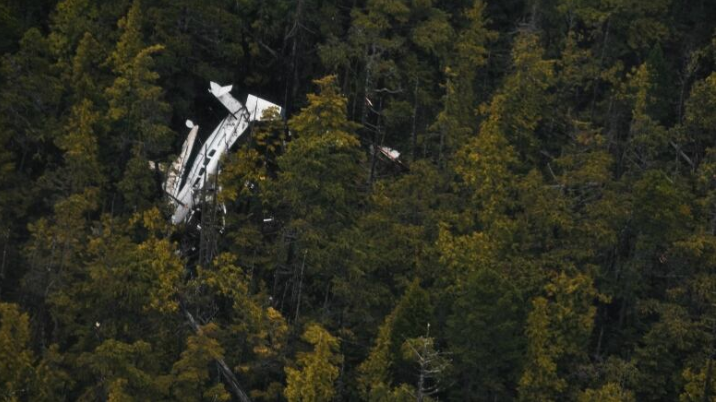
4 dead, 5 others in hospital after crash north of Vancouver Island on Friday
The Transportation Safety Board of Canada (TSB) has deployed a team of investigators to the site of a seaplane crash that killed four people and injured five north of Vancouver Island on Friday.
The Cessna 208, a charter plane operated by Seaair Seaplanes, crashed just after 11 a.m. PT on Addenbroke Island, about 100 kilometres north of Port Hardy, B.C.
Two of the survivors are in critical condition and were airlifted to Vancouver, while three others are in serious but stable condition, according to B.C. Emergency Health Services.
The flight left Vancouver and was en route to Calvert Island, a largely uninhabited island which is roughly the size of Saltspring Island, and marks the start of B.C.’s inside passage.
Eric Peterson is president of the Tula Foundation and the Hakai Institute, which conducts research on B.C.’s coast. He said his institute, and a summer fishing lodge — the Hakai Land and Sea Fishing Club — are the two primary destinations on the island.
Peterson said that no one from the Hakai Institute was involved in the crash.
The plane was not destined for the lodge, a representative for the company said.
“We’re devastated by the fact there was a crash,” said Peterson, adding that there are generally three flights per week to the remote island, known for its “rugged and quite dramatic” landscape.
“We’re regularly in and out. We know Seaair very well — we know the management, we know the pilots, we know all the people and we have huge respect for their professionalism and their safety record,” he said.
The Hakai Institute monitors weather conditions through stations dotted across the island, some which are quite close to the site of the crash.
Data sent to CBC by Peterson shows that around the time of the crash, 6.35 centimetres of rain fell within one hour in the area.
“It is the rain coast — but this was harder rain than anyone had seen, so it was very intense rain,” said Peterson.
Lt. Chelsea Dubeau with the Joint Rescue Co-ordination Centre in Victoria said on Friday that the weather and remote location made the rescue challenging.
Randy Hanna, the president of Pacific Seaplanes, which also operates chartered flights to the central B.C. coast, said the area is marked by “low, coastal terrain influenced heavily by marine air.”
“The weather is tricky — you have to have your wits about you and stay informed. Most modern aircraft is equipped with extensive global positioning systems and flight tracking equipment and software and that’s how we communicate to and from our main bases in remote areas like this,” he said.
Hanna described the people who fly small aircrafts in B.C.’s remote areas as “some of the highest skilled pilots in the world.”
RCMP said on Saturday that while the investigation is in its early stages, no foul play is suspected.


